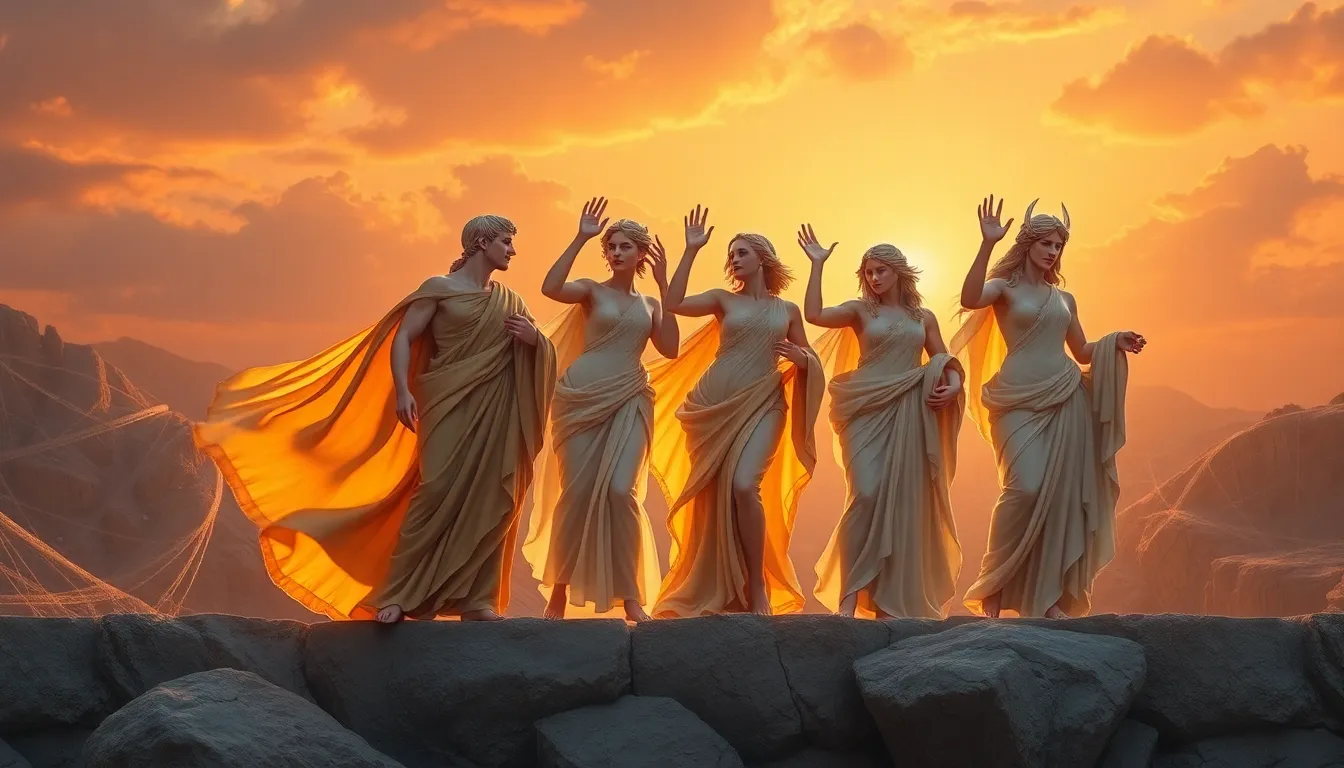Muses and Their Connection to the Creative Process
I. Introduction to Muses
Muses have long been celebrated as sources of inspiration and creativity throughout history. In both historical and contemporary contexts, a muse represents a guiding spirit or force that inspires artists, writers, and creators to produce their best work. The significance of muses transcends cultural boundaries, as various societies have revered them in different forms, from divine entities to personal relationships.
This article aims to explore the multifaceted nature of muses, examining their historical roots, psychological implications, and evolving definitions in modern creative practices. We will delve into the types of muses, their relationships with artists, and the challenges that come with relying on them for inspiration.
II. Historical Perspectives on Muses
In ancient Greek mythology, the Muses were nine goddesses who presided over the arts and sciences, each embodying a different aspect of creative expression. They were:
- Calliope: Muse of epic poetry
- Clio: Muse of history
- Erato: Muse of love poetry
- Euterpe: Muse of music
- Melpomene: Muse of tragedy
- Polyhymnia: Muse of sacred poetry
- Terpsichore: Muse of dance
- Thalia: Muse of comedy
- Urania: Muse of astronomy
Throughout history, the concept of muses evolved significantly, particularly during the Renaissance when artists began to personify inspiration through their relationships with muses. The role of muses in literature and art history became more pronounced as writers and painters alike sought to capture the essence of their muses in their work, creating a rich tapestry of artistic expression.
III. The Psychological Aspect of Muses
The muse has often been seen as a metaphor for inspiration, representing that elusive spark that ignites creativity. Psychological theories suggest that creativity often stems from external influences, including the presence of a muse. For instance, Sigmund Freud and Carl Jung explored the idea of inspiration as a psychological phenomenon where the subconscious mind interacts with external stimuli to produce creative thoughts.
Emotional connection plays a crucial role in the creative process. Many artists find that their best work emerges when they forge deep emotional bonds with their muses, whether they are people, places, or experiences. This connection not only enhances the artistic output but also enriches the artist’s life experience.
IV. Types of Muses: People, Places, and Experiences
Muses can take many forms, and understanding these can help artists harness their creative potential. Some common types of muses include:
- Personal Relationships: Friends, partners, and family members often inspire creativity through their personalities, stories, and shared experiences.
- Environmental Influences: Nature, cities, and travel can serve as powerful muses, providing visual and emotional stimuli that spark ideas.
- Experiences and Memories: Significant life events and memories can ignite creative thoughts, allowing artists to explore their feelings and reflections through their work.
V. The Relationship Between Muses and Artistic Expression
The relationship between artists and their muses has been documented extensively throughout history. Case studies of famous artists reveal how muses have shaped their work:
- Pablo Picasso: His relationship with Dora Maar influenced many of his works, blending his emotional turmoil and artistic innovation.
- Virginia Woolf: The bonds she formed with women in her life served as catalysts for her literary exploration of identity and gender.
- Frida Kahlo: Kahlo often drew inspiration from her tumultuous relationship with Diego Rivera, infusing her paintings with raw emotion and personal narrative.
Muses not only inspire creativity but also shape the themes and styles artists explore. The impact of a muse can be profound, leading to distinctive artistic outputs that resonate with audiences.
VI. The Contemporary Muse: Modern Interpretations
In the digital age, the concept of the muse has transformed significantly. Social media and online communities have become new platforms for inspiration. Artists and creators connect with their audiences and fellow creators in ways that were previously unimaginable, fostering collaborative efforts that enhance the creative process.
Moreover, the rise of self-generated muses encourages individuals to find inspiration within themselves. Many modern creators emphasize the importance of introspection and self-discovery in their work. This shift reflects a broader understanding of creativity as a personal journey rather than solely a response to external influences.
VII. Challenges and Complexities of Muse-Driven Creativity
While muses can be a source of inspiration, they also bring challenges. Many artists experience a dependence on their muses, leading to a fear of creative blocks when inspiration seems absent. Navigating the complexities of muse relationships can also be fraught with emotional turmoil, especially when personal connections are involved.
To foster creativity without relying solely on muses, artists can employ several strategies:
- Diversifying Sources of Inspiration: Engaging with different art forms, cultures, and experiences can provide fresh ideas.
- Establishing a Routine: Developing a creative routine can help maintain productivity, even in the absence of muse-driven inspiration.
- Practicing Mindfulness: Mindfulness techniques can enhance self-awareness, allowing artists to tap into their creativity without external prompts.
VIII. Conclusion: Embracing the Muse in the Creative Journey
In summary, muses play a crucial role in the creative process, acting as catalysts for inspiration and artistic expression. From their ancient origins in Greek mythology to their contemporary interpretations in the digital age, the concept of muses remains relevant and influential.
As we explore our personal muses, we can unlock new levels of creativity and self-expression. Embracing the muse, whether through relationships, environments, or experiences, can enhance our creative journeys and lead to profound artistic discoveries.




